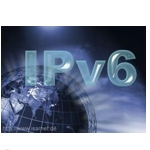 Verizon will begin IPv6 testing for FiOS, setting the stage “…for IPv6 migration for the residential market while maintaining service continuity during the transition.” IPv6 is the latest version of IP protocol, which is basically the language that runs the Internet. IPv4 is the current protocol for the Internet, but with the explosion of Internet connected devices, IPv4 is becoming dated.
Verizon will begin IPv6 testing for FiOS, setting the stage “…for IPv6 migration for the residential market while maintaining service continuity during the transition.” IPv6 is the latest version of IP protocol, which is basically the language that runs the Internet. IPv4 is the current protocol for the Internet, but with the explosion of Internet connected devices, IPv4 is becoming dated.
The issue mainly centers on the availability (or lack thereof) of IP addresses, which are necessary for individual devices to connect to the Internet. According to Verizon, “IPv6 expands the number of possible addresses from approximately 4 billion with IPv4 to roughly 340 trillion trillion trillion IPv6 addresses.” That’s three trillions – sounds like a lot to me!
Jean McManus, executive director – packet network technology for Verizon says with IPV6, “…a customer’s home router would no longer require network address translation (NAT), which makes it possible for a single public Internet address to be translated into many private IP addresses to accommodate multiple IP-enabled devices inside the home. IPv6 allows each device to have its own public address. This streamlining of the home environment will allow for more innovation in services to occur.”
I read this to say, remember that idea of Internet connected refrigerators and washing machines – it’s about to come true.
Verizon will conduct a month long trial with several existing FiOS customers, using Verizon supplied IPv6 enabled CPE. During the transition, equipment and software must be able to support both IPv4 and IPv6. It’s a transition all ISPs will eventually have to make.
